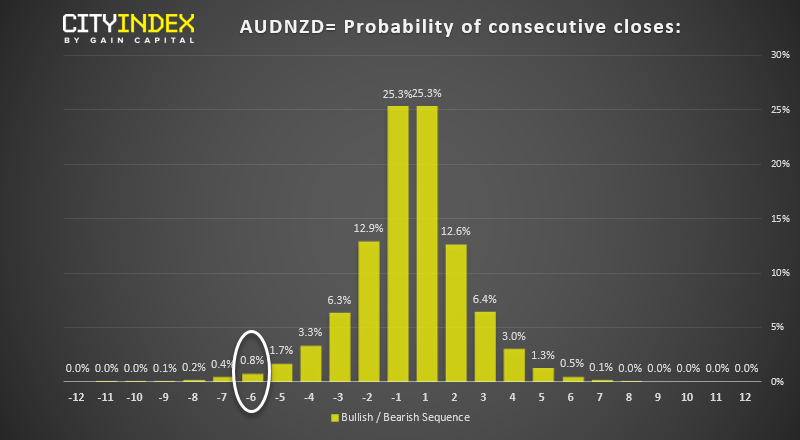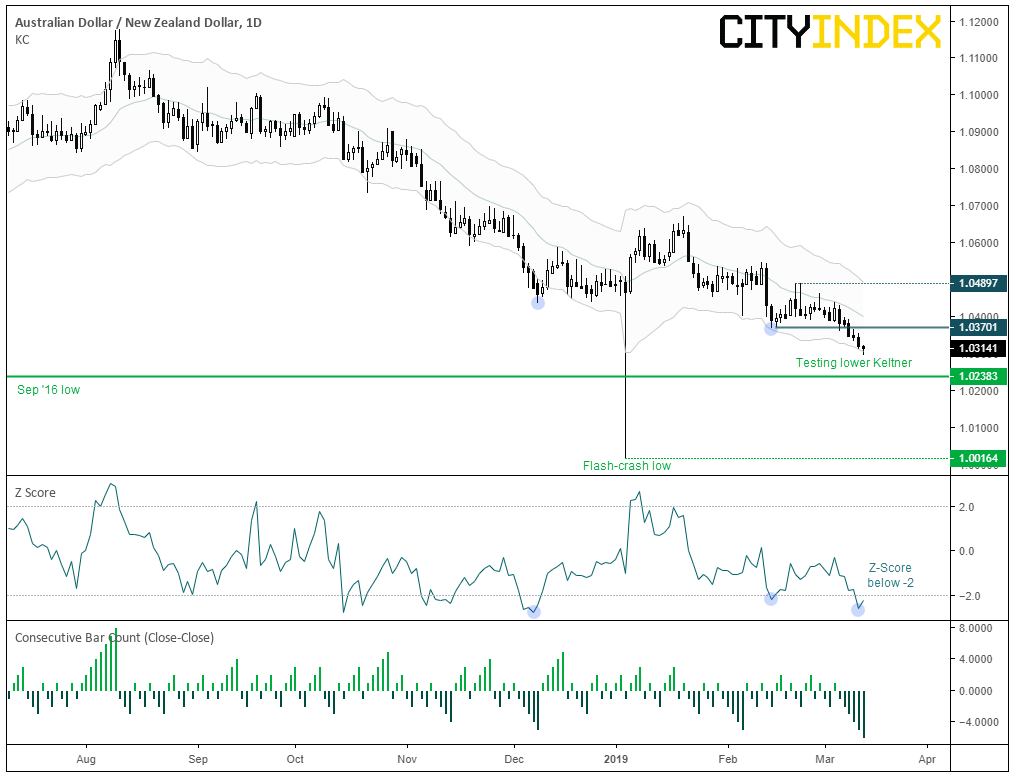Although the trend points lower, mean reversion appears likely over the near-term according to some indications.
- Z-score, consecutive days and lower Keltner-band test suggest mean-reversion
- The potential for a rebound towards 1.0370 before heading lower
- The trend remains bearish below 1.0490
Granted, AUD/NZD may not be a go-to currency choice for some, yet its bearish trend structure continues to print lower highs and lower lows. Since breaking beneath 1.0370, it’s trading at levels not seen since January’s flash-crash and could be headed for the September 2016 low at 1.0238. However, a few indications point towards a mean reversion ahead of its next leg lower.
Today’s low has tested the lower Keltner band, it’s Z-score (compared with a 20-day average) is below -2 and we’re currently within its 6th consecutive bearish day. It’s worth remembering that indications only ‘indicate’ but layering them together congruently can improve the probability of their effectiveness overall, so-long as they’re not simply repeating the same information.

The Z-score is far from perfect as, just like an RSI, it can spend extended periods in overbought or oversold conditions. However, we can see in recent history that troughs below 2 have coincided roughly with a retracement. The Keltner band becomes more reliable the further prices trade outside of it, yet here we note a lack of momentum on bearish days over recent session, which makes a downside extended move appear less probable over the near-term.
Furthermore, we’re now within its 6th consecutive bearish session, an event which has only occurred 0.8% of days since data from 2002. We can clearly see on the distribution that the greater the consecutive run, the probability of the occurrence decreases, which means the probability of mean reversion becomes greater.

Technically, we see potential for a rebound towards 1.0370. A counter-trend trader could use 1.0370 as an interim target, whereas a trend trader could consider bearish setups below 1.0370. If bearish momentum returns beneath this key level, it could be headed for the September low around 1.0238. Whereas a break above 1.0370 brings the 20-day average into focus (this is ‘mean’ reversion, after all). However, keep in mind the dominant trend remains bearish beneath 1.0490.
